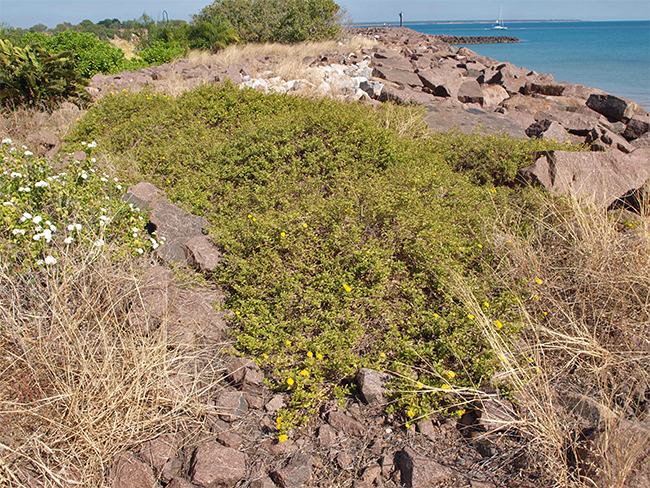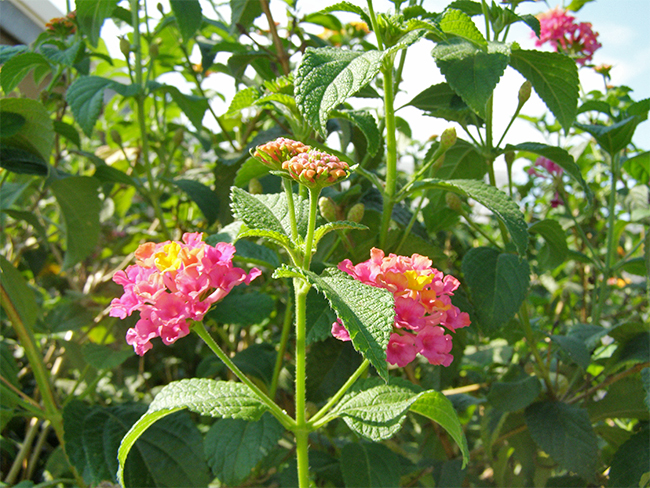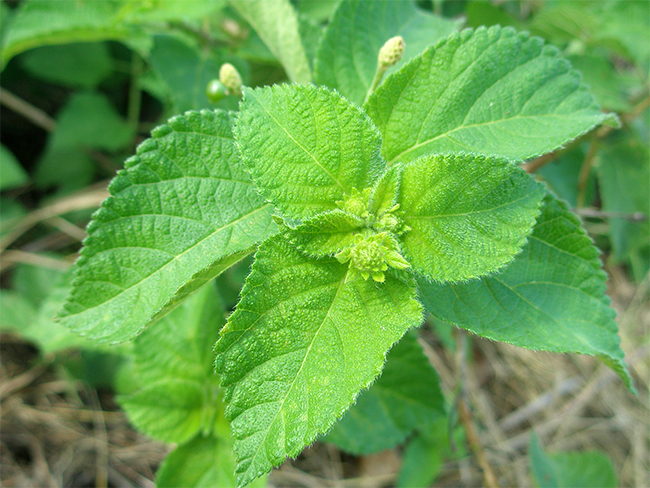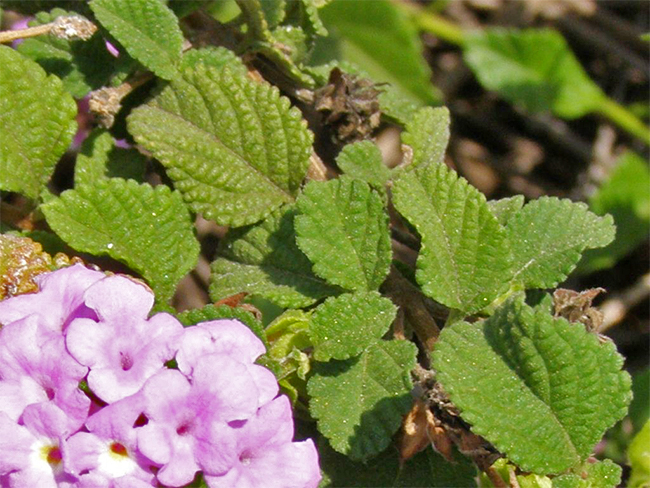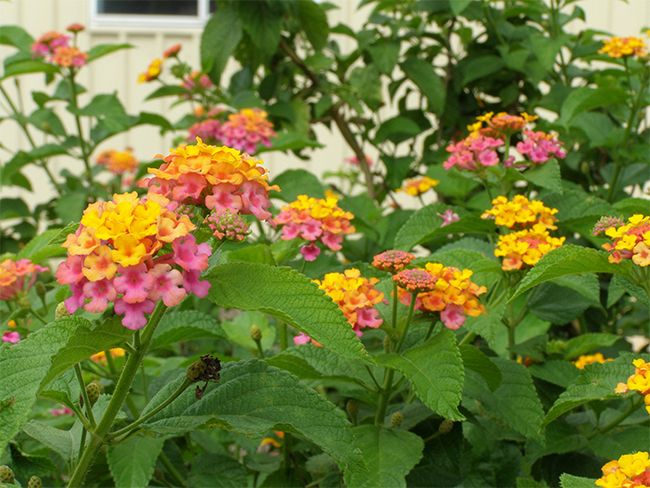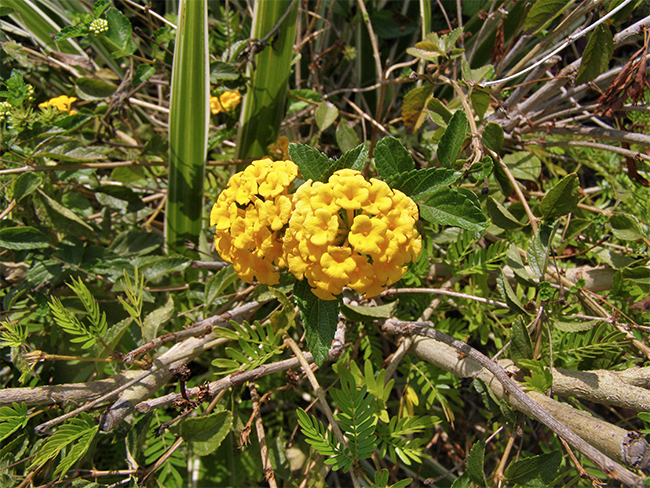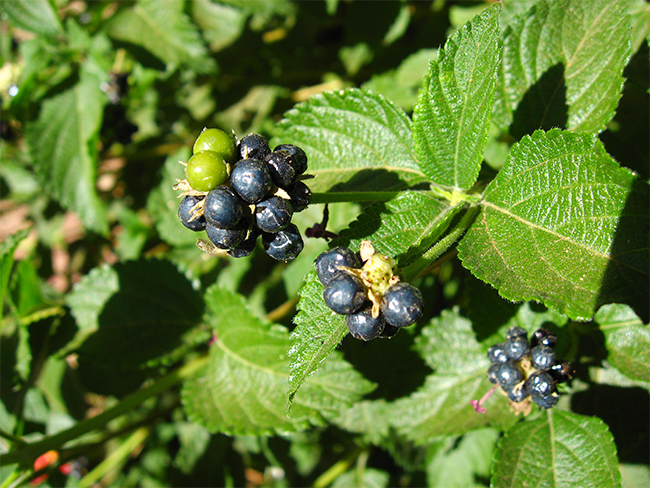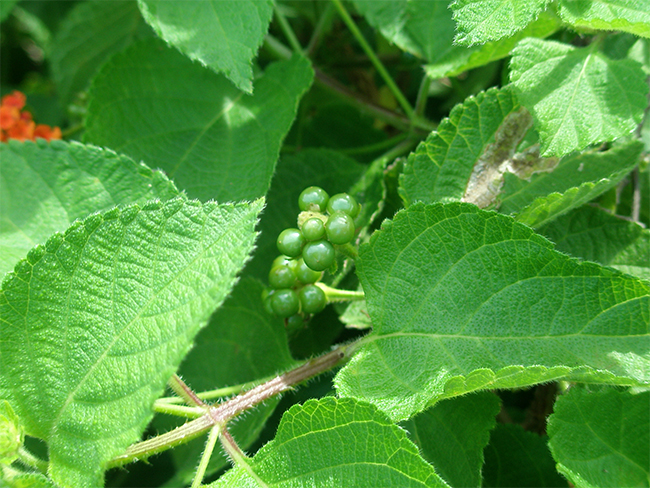Lantana
Scientific name: Lantana camara and L. montevidensis
Declaration status: Class B
Lantana camara is a Weed of National Significance. For more information, go to the Australian Government's Department of Environment website.
There are two types of lantana in the Northern Territory (NT), common lantana and creeping lantana.
Lantana is native to the Americas and was introduced to Australia as an ornamental plant.
It thrives in disturbed areas, but can also become the dominant understorey in undisturbed areas.
There are 29 different forms of lantana now naturalised in eastern Australia.
Small infestations have occurred in the NT in Darwin, Adelaide River, Katherine, Mataranka and on Groote Eylandt.
For more information get the lantana identification fact sheet PDF (1.0 MB).
Impact
Lantana is allelopathic, meaning it can release chemicals into the soil which prevent germination and competition from some other plant species.
Lantana can have all of the following impacts:
- displace native species
- alter fire regimes
- leaves and seeds are toxic to many animals, causing gastrointestinal disturbance, photosensitivity and potentially death in cattle and sheep
- loss of productivity due to toxicity to stock and pasture replacement.
Identification
You should use this as a guide. There may be other plants or weeds that look similar.
- spreading shrub, 2 to 4m tall often forming dense thickets
- young stems are square, hairy and green, mature stems become cylindrical, grey-brown and lose their hair
- leaves opposite, bright green above, paler beneath, mildly toothed and hairy
- approximately 6cm long in common lantana, but only 3cm long in creeping lantana
- emit a pungent odour when crushed
- flower heads are about 2.5cm wide, made up of 20 to 40 flowers
- common lantana flower colours vary between red, orange, pink, purple, cream and pale yellow
- creeping lantana flower colours are mainly pink or purple with white or yellow centres
- berries ripen from green to shiny purple-black, contain a single pale seed.
If you are unsure, contact the Weed Management Branch.
Control
Some long term residents of the NT may have become accustomed to seeing lantana behaving in a non-invasive manner. Please be aware that different varieties can behave differently in different circumstances, and both forms are known to invade and/or persist in the NT.
Chemical control
The best time to treat lantana is from December to March. Below is a list of treatment methods that can be used.
| Chemical concentration | Rate | Situation, method and notes |
|---|---|---|
|
Fluroxypyr 200 g/L Various trade names |
0.5-1 L / 100 L or 3 L / ha (boom) |
Seedling or adult (individuals or infestation): Foliar spray – use higher rate on plants over 1.2m, apply when actively growing |
|
Fluroxypyr 333 g/L Starane® Advanced | 300-600ml / 100 L |
Seedling or adult (individuals or infestation): Foliar spray – use higher rate on plants over 1.2m, apply when actively growing |
|
Triclopyr 300 g/L + Picloram 100 g/L Various trade names |
350-500ml (750) /100 L or 3 L / ha (boom) |
Seedling (individuals and infestation): Foliar spray – use higher rate on plants > 1m (highest for harder to kill varieties), apply when actively growing, non-ionic wetting agent required |
|
Aminopyralid 8 g/L + Triclopyr 300 g/L + Picloram 100 g/L Grazon® Extra |
350-500ml (750) / 100 L or 10 L / ha (aerial) |
Seedling (individuals and infestation): Foliar spray – use higher rate on plants > 1m (highest for harder to kill varieties), apply when actively growing, non-ionic wetting agent required |
| Triclopyr 240 g/L + Picloram 120 g/L |
1 L / 60 L (diesel) 1 L / 60 L (diesel) |
Seedling (individuals): Basal bark < 15cm stem diameter Adult (individuals or infestation): Cut stump > 15cm stem diameter |
|
Triclopyr 600 g/L Various trade names |
1 L / 60 L (diesel) 1 L / 60 L (diesel) |
Seedling (individuals): Basal bark < 5cm stem diameter Adult (individuals or infestation): Cut stump > 5cm stem diameter |
Non-chemical control
Blade ploughing
A blade plough is used to push over some woody shrubs and sever their roots underground.
Bulldozing
Bulldozers, chopper rollers or graders are used to clear large weed infestations. This leaves large areas of soil exposed so follow up control or revegetation should be considered.
Stick raking
A large blade with teeth attached to a bulldozer is used to clear large weed infestations. This leaves large areas of soil exposed so follow up control or revegetation should be considered.
Fire
Fire as a management technique is most effective when it is used together with other methods. It is useful for mass seedling control if there is a sufficient fuel load.
Spread
Lantana is spread by birds and other animals consuming and passing the seeds in their droppings, as well as by vegetative reproduction.
Spread prevention
You can prevent the spread of lantana by doing all of the following:
- remove lantana from gardens and landscaping
- map infestations to help develop a management plan
- control minor infestations, isolated outbreaks or seedlings first
- designate wash down areas and actively work to prevent contamination of clean areas
- monitor areas that you have treated and watch for re-infestations
- report new occurrences of lantana to the Weed Management Branch.
Give feedback about this page.
Share this page:
URL copied!

